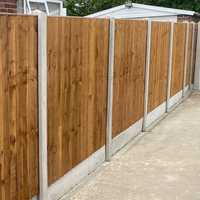Save money with your own homegrown produce using Dandy's Compost and VegeGrow Topsoil: A FREE Step-by-Step Guide to Building a Veggie Plot Raised Bed with sleepers
As the cost of living crisis continues to put a strain on household budgets, finding ways to save money has become a top priority. One practical solution that not only helps you cut costs but also offers numerous other benefits is growing your own fruit and vegetables. By cultivating your own vegetable patches, allotments, or raised beds, you can enjoy fresh, nutritious produce while reducing your reliance on expensive supermarket purchases. In this blog post, we will explore the advantages of growing your own food and showcase Dandy's FruitGrow and VegeGrow Topsoil, which are ideal for creating thriving gardens. We will also provide you with a FREE step-by-step guide to building a raised bed using Dandy's Sleepers, enabling you to grow your own fruits and vegetables. Let's dive in and unlock the potential of homegrown goodness!

Sleepers are a fab option as they are thick softwood and already tanalised - but any wood can be used, including pallet wood!
-
With supermarket prices and bills skyrocketing by 20%, families and individuals are feeling the financial strain. Growing your own fruit and vegetables presents an effective way to counteract rising expenses and take control of your grocery budget.
-
Homegrown produce is fresher and often more nutritious than store-bought options, as you have complete control over the growing process, ensuring the use of organic methods and avoiding harmful chemicals. Cultivating your own garden promotes sustainability by reducing the carbon footprint associated with transportation and packaging, as well as supporting biodiversity and healthy ecosystems.

-
To establish a thriving garden you need nutrient-rich soil and compost. Dandy's Peat Free Multi-Purpose Compost and VegeGrow Topsoil provide the perfect foundation for your growing endeavours. With their premium quality and specially formulated composition, these products nourish your plants, ensuring healthy growth and abundant yields.
-
A raised bed offers several advantages, including better drainage, improved soil quality and easier maintenance.

Step 1: Gather the materials:
- Dandy's Sleepers (quantity depends on the desired size of the raised bed)
- Measuring tape
- Spirit level
- Drill
- Screws
- Anti-Weed Fabric Membrane
- Mulch for topping off (optional but really helpful!)
Step 2: Choose the location:
Select a sunny spot in your garden or allotment that receives at least six hours of sunlight per day. Ensure there is enough space to accommodate the raised bed's dimensions.
Step 3: Measure and mark the dimensions:
Using the measuring tape, mark the desired length and width of your raised bed on the ground. Ensure the dimensions are suitable for the chosen Dandy's Sleepers.
Step 4: Assemble the raised bed:
Place the first layer of Dandy's Mini Sleepers or Grade A Sleepers on the marked area, ensuring they are level and aligned. Drill pilot holes into the Sleepers, then secure them together using screws. Repeat this process for additional layers, stacking them until you reach the desired height.
Step 5: Prepare the ground:
Clear the area inside the raised bed of any grass, weeds, or debris. Lay our Anti-Meed Membrane fabric on the ground to prevent weed growth.
Step 6: Fill the raised bed:
Fill the raised bed with Dandy's VegeGrow Topsoil and away you go!
Step 7: Top your new bed:
Don't forget to top your new veg plot off with a layer of mulch - we love Composted Mulch Fines, Hardwood Chips, Spent Mushroom Compost and our Peat Free Compost. This will help keep the ground warm in the winter and retain moisture in the summer, as well as slowly releasing nutrients back into the soil.


















